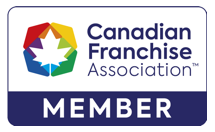This sounds like something one of my law school professors asked us on Day 1 many years ago. It probably sounded like a “simple” question back then, too. I’ve since learned that, while it’s not a difficult question to answer, it is one that requires a full consideration of some highly relevant facts before it can be properly answered.
What options are available? The three key options are to operate the business as (i) a sole proprietorship, (ii) a form of partnership or (iii) a corporation.
Business Structures in Canada
A huge number of Canadian businesses are sole proprietorships. They are the easiest to set up and operate. Essentially, you are your business. You do not exist as separate entities (like a corporation does). To start a business as a sole proprietorship, all you have to do is start! You do need to register it with the Province(s) in which you’re operating as a sole proprietorship and you likely need to get an H.S.T. number from Canada Revenue Agency (“CRA”), but these are easy to do. Usually you are the only employee – certainly at the beginning. That said, you can always hire employees, if you’d like to grow (as a sole proprietorship). In that situation, you would also need to get a payroll number from CRA.
Operating as a sole proprietorship, though, means all income from your business is your personal income taxed at your personal marginal rate. So, depending on how financially successful your business is or will be, operating as a sole proprietorship may not be the best idea.
Further, all business liabilities and obligations, including any lawsuits stemming from your business, will be your personal liabilities for which all of your personal assets (real estate and personal property) will be at risk. There is no litigation or liability protection in a sole proprietorship structure.
The second kind of business structure is a partnership, of which there are three sub-types. This is not often an intended choice and is typically used only for certain kinds of business (e.g. professionals, including lawyers and accountants).
The third and often-used structure is a company/corporation. These are synonyms. Unlike a sole proprietorship which can be started simply by starting, a corporation does not exist until the necessary creation documents are filed with and stamped/approved by the applicable Provincial authority. Once the corporation exists, it is considered a separate legal person from its owners (the shareholders) and consequently provides the shareholders with protection from being held liable for the liabilities and obligations of the corporation. There are very narrow circumstances when a court can decide this not to be the case, but this requires fraud, among other things, to even be considered.
Another advantage to a corporation is that it allows the owners/shareholders to keep business profits in the corporation and therefore taxed at a lower rate than those same profits would be taxed in the hands of a sole proprietor.
Factors to Consider in Choosing a Business Structure
There are a number of other factors to consider when deciding what the best structure will be for your business but liability and taxes are the two variables that most frequently decide the issue for clients.
Therefore in order to decide which type of business structure is best for your business you need to ask yourself and your advisors some questions that require an honest consideration. Depending on the answers to those questions, any one of the three main kinds of business structures will ultimately win out.
If you have business law questions, including questions about business formation and organization and business operations contact the knowledgeable business lawyers at Mills & Mills LLP at 416-863-0125 or via email.

 2 St Clair Ave West
2 St Clair Ave West


